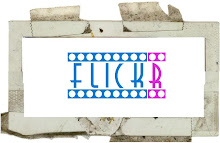Here are five Classic Beauties of Shell Cameos that I have in my collection! These are some lovely miniature pieces of art!

I’ve discovered Cameos while selling vintage jewelry and have admired cameos for as long as I can remember. I think my first impressions of cameos came from old movies, to this day, I can recall the way cameos first impinge upon me with their timeless, crafted beauty.

Cameos are heirlooms that are often passed on to another special person. For instance a daughter, granddaughter, niece or close friend. The new owner of the cameo will cherish it as much as the first.

The histor of Cameos:
Throughout history, persons of royalty have set the tone for jewelry fashion. It is said that Queen Elizabeth loved to wear cameos and it is noted that Catherine the Great had a very impressive collection of them. And, the cameo survived the whims of changing fashion during the Nineteenth Century in England. Since Queen Victoria favoured cameos, the cameo was quite popular during and since her reign. They were popular as pins and pendants usually worn on a black velvet ribbon or even sometimes-pastel satin ribbons.

During the Victorian Era, (1837-1901) every decade had its jewelry trends, but the cameo remained a favourite. And interestingly, the intaglio, which was a piece carved below the surface, came before the cameo. In ancient times, the intaglio was used to seal papers or to mark property. Later on, it became a jewelry item worn by women. The cameo is the opposite of the intaglio. It is a portrait or scene carved in relief with a contrasting colored background. In the Nineteenth Century, skilled artisans utilized gemstones, stone, shell, lava, coral and manmade materials to produce cameos.

The making of Cameos:
Italian carvers began using shell for their creations around 1805. the Victorian Era, shell had become appreciated as a medium that was easily carved and inexpensive. Unlike carved gems, the shell cameo was less formal and was worn during the day. Stone cameos came from agate, onyx or sardonyx. These materials offered many colorful layers for carvers to utilize. Although they preferred stone, it was not always plentiful; and these artisans looked for other mediums for their designs.

Popular motifs for Cameos:
Discoveries of archaeological sites in Italy and Egypt renewed an interest in the classics that influenced cameos of the Victorian Era. Motifs included gods and goddesses from mythology and other subjects related to them, such as Bacchante maidens adorned with grape leaves in their hair, the Three Graces, who were the daughters of Zeus, and Leda, a woman shown feeding Zeus and more. Scenes showcased the talent of cameo carvers and were popular with enthusiasts. Others such as Zeus in his chariot and Rebecca at the Well added elements such as houses, trees and bridges. The quality of the carving also varied from dreamlike to realistic. But naturalism appealed to the Victorians. Their love of gardening translated into cameos that also depicted flowers. And, the floral motif continues to be popular as a subject for modern cameos.

The Emerging of the idealized woman:
A prized souvenir for a Victorian was a cameo according to her likeness. While commissioned portraits were in vogue, another kind of portrait appeared with the anonymous woman. Carvers could fashion such images in shell or lava quickly and tourists created a demand for them.

Women pictured on cameos have included Romanesque, with classical features (with long, straight noses and Roman dress), modified images of women with upturned noses, jewelry and upswept hairstyles. The cameo habille depicted the portrait of the idealized woman adorned with jewelry, and tiny diamonds on the cameo represented jewelry such as earrings and a necklace.
The industrialization of the Victorian Era made mass production of jewelry possible. The anonymous woman was molded into cameos from manmade materials such as glass or celluloid.
Dating a Cameo:
To date a cameo with accuracy, many hours or even years of research may be necessary to train the eye. Magnification is vital and a jewelers loupe is a necessary tool in examining a carving and to be able to determine what the cameo is made of. It can detect if it is machine made, or has a snowy appearance. Such a close inspection can help a collector discover if the cameo has been carved in one piece or has been assembled from different materials and glued together.
The motif on the cameo can provide a timeframe for its origin. If a shell or stone cameo contains a classical scene, it may have originated in the 18th or 19th centuries when such subjects were popular. The anonymous woman on a cameo indicates that it comes from the Victorian Era, while the cameo habille did not become fashionable until late in the Nineteenth Century.
Physical traits sometimes reveal when a cameo was carved. The long Roman nose denotes that the piece was originated before 1850. If the nose is slightly upturned, it can be dated after the mid-nineteenth Century. A pert nose is indicative of the turn of the century. An upswept hairstyle indicates a late Victorian cameo, while shorter curls are indicative of the 20th Century.
The medium also provides clues to the history of the piece. Shell cameos were used during the Victorian Era, and later. They have a translucent quality when held up to the light. Lava came from the 17th century, but a large majority came during the 19th century from Mount Vesuvius. Jet gained popularity in the 19th Century in Whitby, England during the Victorian Era.

For the past 25 years, carvers in Germany have produced cameos using the laser technique. It may feel rough to the touch. To learn about cameos, it is important to handle them. This allows the collector to feel, and tap them slightly against the teeth to identify whether they are made of stone, shell or other materials.

Cameos represent a form of art that offers something for everyone.

P.s. I will be selling 4 of 5 of these beauties on my ebay shop and I will do a shop update once their are up!
Kisses for everyone!
.jpg)




